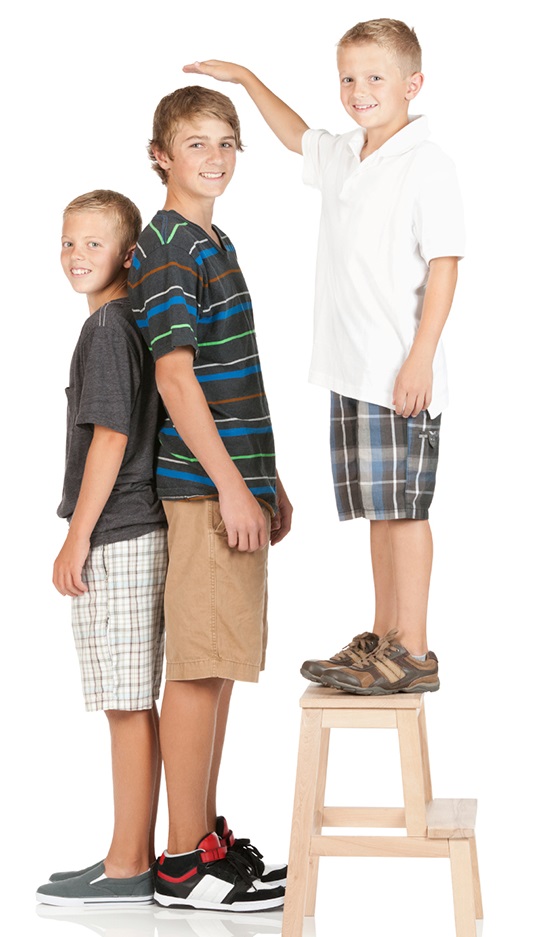
Growing Pains in Children
Has your child had a growth spurt recently? Have they been complaining knee, heel or joint pain?
Your child may be suffering from a common growing condition. Read more to find out what these conditions are and what you can do to help them.
For children, taking part in sport and physical activity is a fantastic thing to do – it develops strength and co-ordination skills and helps them to make friends and stay active. It also teaches them about health and fitness and keeps them away from excessive PlayStation and iPad use. Their young bodies seem to have endless amounts of energy but sometimes they will complain of pain with physical activity in their heels, knees, hips or spine (I am not lying in saying this as I have had young patients tell me they are doing up to 12 exercise sessions a week!). It’s important for mums and dads and children to know how much is too much! Understanding this is important to address any issues early to minimise ongoing pain and symptoms. So let’s take a closer look at the two most common conditions:
Sever’s disease
Despite the name, Sever’s disease is not really a disease. It is an inflammatory condition that occurs at the back of the foot. Generally, Sever’s is caused by excessive tugging or pulling on the growth plate and bone by a growing Achilles tendon where it attaches onto a growth plate in the heel. If the tendon doesn’t cope with the strain it can cause local, swelling and pain around the heel bone.
Sever’s most commonly occurs in physically active growing children between the ages of 8-10 in girls or 10-12 in boys. Pain may be noticed when walking, running, jumping or pointe work in ballet, and if severe may even make them limp and walk on their tip toes.
The good news is that Sever’s will eventually go away when your child’s growing slows down, but in the meantime what can you do to help?
- ice packs to settle the pain – apply for 15-20mins to the sore area, especially after sport
- simple pain killers, as prescribed by the GP or Pharmacist
- reduce the amount of load going through the area / load management – your physiotherapist is trained to guide you as to the appropriate amount of exercise your child should be doing.
- stretches / muscle release – again, your physio can teach you specific stretches to help. Stretching incorrectly or with wrong technique will further irritate their symptoms.
- occasionally a gel heel cup or an orthotic can reduce symptoms.
Osgoods-Schlatter disease
Similar to Sever’s, Osgoods-Schlatter’s is a disorder more than a disease and is also a growth plate injury caused by the muscle or tendon pulling on the growth plate. Osgoods occurs just below the kneecap where the quadriceps tendon attaches onto the shin. It’s usually just in one knee but can occur in both.
Your child‘s symptoms may range from mild to severe and can last from weeks to months. Sometimes a small lump may develop in this area – this is nothing to worry too much about! This is the body trying to adapt to the tendon pulling on the bone, by creating new bone where the tendon attaches. The area will be tender to touch and your child may have pain in the knee, with squatting, running or climbing stairs. There may also be some redness at the site.
Osgood’s is more common in boys but can occur in girls too. In girls it usually occurs at 11-12 years of age, and boys at 13-14 years old. It mostly occurs in children that play a lot of sports, especially those that involve running, jumping or changing direction e.g. basketball, soccer or ballet.
So when will it disappear? Like Sever’s, Osgoods usually resolves with time, when the child stops growing so rapidly and they are forced to decrease their physical activity due to pain. In the meantime, management can also include:
- applying ice packs when painful
- pain relief medication as prescribed by your GP or pharmacist
- a correct stretching / muscle release program and
- activity modification / load management – which your physiotherapist is trained to guide you.
- Technique correction: ie running and jumping mechanics
- Taping
These conditions come under the medical heading of traction apohysitis and there are a number of other sites in the body where this occurs.
If your child seems to be experiencing one of the conditions above or any other joint or muscle pain, bring them in for a full assessment. We can help you to manage their pain so they can continue keeping fit and healthy and on the field!
To make an appointment, call us on 94285772.



